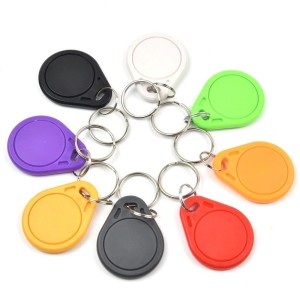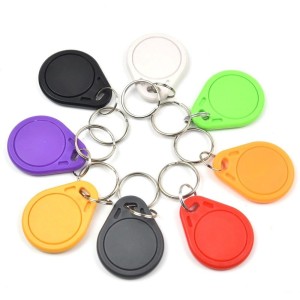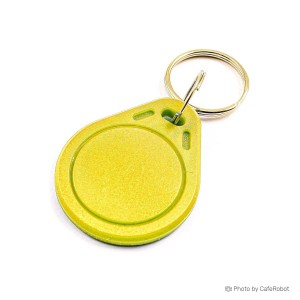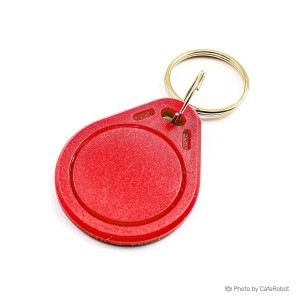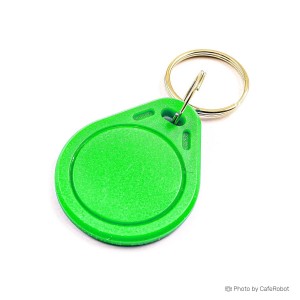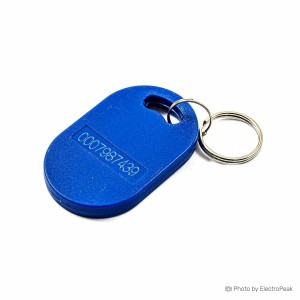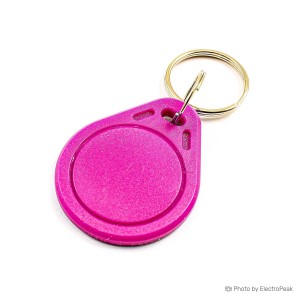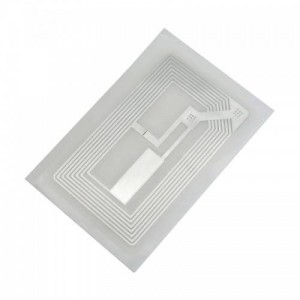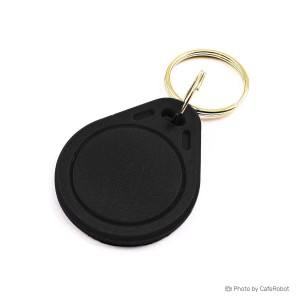Unlike passive tags without an internal power source, active RFID tags feature their own battery and internal transmitter, typically in the form of a beacon or transponder. This enables active tags to continuously transmit signals to an RFID reader, reaching distances of up to 150 meters, contingent on frequency levels.
RFID Tags
-
125Khz RFID ID Key Tag - Yellow
Out of stock -
125Khz RFID ID Key Tag - Red
Out of stock -
13.56Mhz RFID IC Key Tag - Pink
Out of stock -
13.56MHz Transparent Clear NFC Tag
Out of stock -
125Khz RFID ID Key Tag - Black
Out of stock
RFID Tags
RFID cards/tags are small, portable devices embedded with an RFID chip. They store data that can be wirelessly read or written by an RFID reader. Commonly used for identification, access control, and tracking.
Price of RFID Cards/Tags
The cost of RFID cards/tags varies based on factors such as frequency, material, and functionality. Basic cards are budget-friendly, while specialty or programmable tags may be more expensive.
Tips for Buying RFID Cards/Tags
Frequency: Choose cards/tags that operate on the same frequency as your RFID reader for compatibility.
Material: Consider the material of the card/tag based on environmental factors, such as waterproof or heat-resistant options.
Security Features: Evaluate additional security features, such as encryption, based on the level of protection needed for your application.
Types of RFID Cards/Tags
Passive RFID Cards/Tags:
Passive RFID cards, exemplified by models like MIFARE Classic 1K and EM4200, rely on the energy transmitted by the RFID reader for their operation. These cards are suitable for short-range applications where the reader's energy is sufficient to power the tag.
Active RFID Cards/Tags:
Active RFID cards, represented by examples like AeroScout T3 and Savi ST-694, have their power source, enabling them to communicate continuously with the reader and achieve longer reading ranges. This feature makes them suitable for applications requiring extended coverage.
UHF RFID Cards/Tags:
UHF RFID cards, featuring models like Alien Higgs-3 and Impinj Monza R6, offer extended reading ranges and are commonly employed in logistics and supply chain applications. The UHF frequency allows for efficient tracking in large-scale environments.
NFC Cards/Tags:
NFC cards, operating at HF frequencies, are well-represented by models like NTAG213 and MIFARE Ultralight. These tags are commonly used in contactless payment systems and smartphone interactions, providing secure communication within short distances.
Wristband RFID Tags:
Wristband RFID tags, designed in the form of silicone or fabric wristbands, serve various applications, including events, access control, and healthcare. These wearable tags offer convenience and ease of use in scenarios where traditional card-based systems may be impractical.
Differences between passive and active RFID
Are RFID readers compatible with multiple RFID tag types?
In general, passive RFID tags, whether LF, HF, or UHF, are designed to be compatible only with the corresponding type of passive RFID reader. For example, an LF reader is typically configured to read LF tags exclusively and would not be able to read HF or UHF tags. This segregation ensures that each RFID tag is appropriately matched with the compatible reader technology for effective communication.
How do RFID work?
RFID readers use radio frequency technology to communicate with RFID tags. When a reader sends out a signal, it activates the tag, allowing it to transmit data back to the reader. This technology enables quick and contactless identification in various applications.
What is the range of an RFID reader?
The range of an RFID reader varies depending on the type and frequency. Low-frequency readers typically have shorter ranges, suitable for close proximity, while UHF readers can achieve longer ranges, making them ideal for logistics and tracking applications.
Can RFID readers write data to RFID tags?
Yes, many RFID readers have read and write capabilities. This feature is valuable for applications where data on the RFID tag needs to be updated or modified, such as in inventory management or access control systems.
